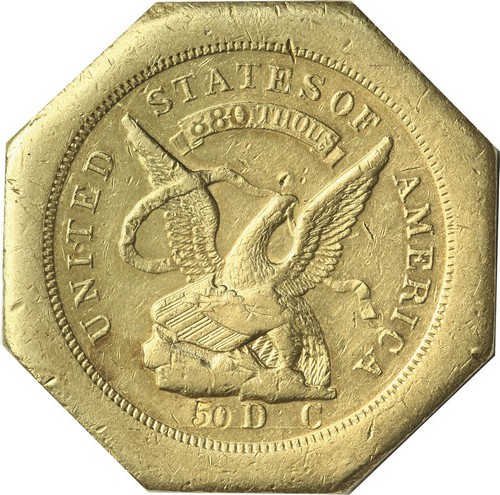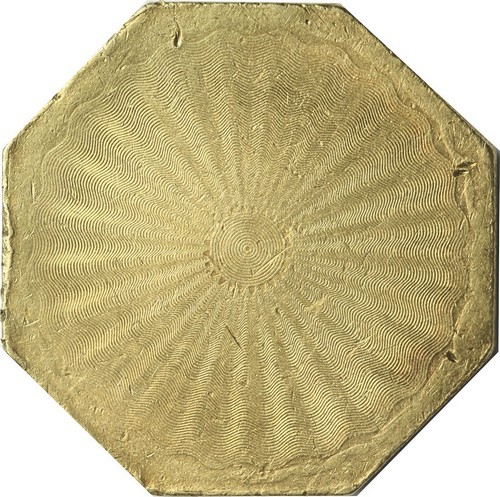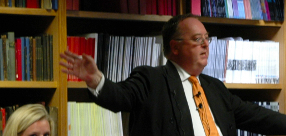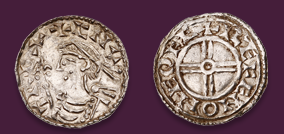Auction: 320 - The Numismatic Collector's Series Sale and the Forest Park Collection
Lot: 2499
1851 $50 United States Assay Office. Augustus Humbert. K-2. "880 THOUS." "50 D" below the eagle. No 50 on the reverse. . NGC MS 61. Pleasing light golden yellow. The obverse with a minor scrape in the field under UNITED, and a few trivial rim bruises, typical for coins of this size and weight. The lustrous and very attractive reverse is free from any noticeable contact marks.
On January 24, 1848, James W. Marshall discovered gold at Sutter's Mill in Coloma, California. Over 300,000 people migrated to California and many of them converged on San Francisco creating an economic boom of major proportions. This boom created an economic problem of major proportions, eventually bringing about the minting of these legendary "Californians," "quintuple eagles," "five eagle pieces," or "slugs" - the $50 pieces produced by Augustus Humbert, United States Assayer of Gold in 1851.
The economic problem arose from the simple fact that there was no United States mint in California. There was no way for miners, prospectors or merchants to convert their gold into coins, and this made it extremely difficult to conduct simple business transactions. Petitions sprang up urging the state to set up a government assay office, but this suggestion was opposed by bankers, gold dust dealers and merchants who were making a good living buying or accepting gold in trade at a large discount.
The solution to the problem was the establishment of a United States Mint in San Francisco, but that would take an act of Congress. Opposition came from the states that already had United States Mints - Penssylvania, North Carolina, Louisiana and Georgia. A compromise was reached, and an act was passed in 1850, establishing a Federal Assay Office. The act authored "ingots" of $50 " to be struck, consisting of refined gold "….of uniform fineness…." Legends were to include the words "LIBERTY" and "UNITED STATES OF AMERICA." These "ingots" would circulate like Federal coins, but their metallurgic composition differed from the gold coins that were issued by the official U. S. Mints. Copper, nitric acid, sulfuric acid and hydrochloric acids were necessary in order to create the proper metallic content, and these raw materials were not available on the West Coast.
Technically, the United States Assay Office was not a U. S. Mint, but the officials at the Philadelphia Mint treated Humbert as if he were a branch-mint supervisor. The production of the master dies and hubs for the "ingots" was carried out under the direct supervision of Mint officials. The "ingots" circulated side by side with U.S. and foreign gold coins, and they were acceptable for the payment of Customs duties.
Scarce, beautiful, historically significant, and in a high state of preservation; this example would be the centerpiece of any great Territorial Gold collection.
These rarely appear at auction in this grade. In March of 2014 a PCGS MS60 realized $282,000 in a Heritage sale. Worthy of a premium bid.
Sold for
$100,000







